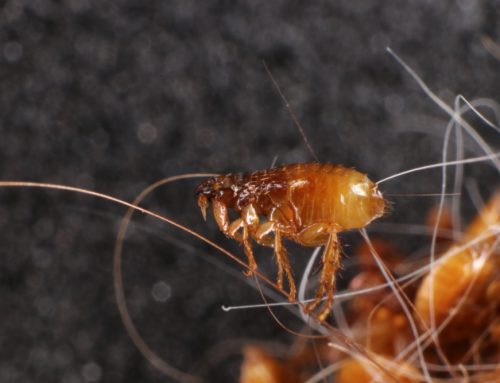Hip dysplasia is an orthopedic deformity that occurs during a puppy’s growth phase. The condition commonly affects large-breed dogs and, if not addressed properly, the affected dog can experience significant pain and decreased mobility. Our Neighborhood Veterinary Centers team wants to provide information about hip dysplasia, so you know what to expect if your dog is affected.
Hip dysplasia causes in dogs
The hip joint is a ball and socket joint, and during growth, the ball (i.e., the femoral head) and the hip socket should grow at equal rates. In puppies affected by hip dysplasia, this growth is not uniform, resulting in joint laxity that leads to osteoarthritis (OA) as the body attempts to stabilize the joint. Factors that contribute to hip dysplasia include:
- Breed — Hip dysplasia is a genetic disease that is more commonly seen in large-breed dogs, including German shepherds, Labrador retrievers, golden retrievers, Saint Bernards, and Old English sheepdogs.
- Nutrition — Rapid growth from excessive nutritional intake increases a dog’s hip dysplasia risk.
- Exercise — Too much or too little exercise in young puppies can contribute to the disease.
- Early neutering — If testosterone is removed too soon, the dog’s bone growth is not curtailed, increasing their hip dysplasia risk. Typically, large-breed dogs should not be neutered until they have reached sexual maturity, which can occur as late as 18 to 24 months of age.
Hip dysplasia signs in dogs
Some dogs exhibit hip dysplasia signs as young as 6 to 18 months of age, but many don’t show signs until much later in life when they have developed significant arthritis. When signs do occur, they include:
- Hind-limb pain and weakness
- Abnormal sitting positions
- Difficulty rising from a sitting position
- Decreased activity
- Reluctance to navigate stairs or jump on or off furniture
- Bunny hopping gait when running
- Muscle loss over the hind end
How is hip dysplasia diagnosed in dogs?
A dog should be tested if they are exhibiting hip dysplasia signs, or they are being considered as a breeding candidate. Diagnostic techniques include:
- Physical examination — Our veterinary team will observe your dog as they walk to assess for joint pain. We will also palpate and manipulate your dog’s joint, because hip dysplasia usually causes pain when we extend the dog’s hip.
- Ortolani sign — The Ortolani sign is a useful palpation technique that generates a distinctive popping noise in a dysplastic hip.
- X-rays — X-rays are the most definitive tool for a hip dysplasia diagnosis. The dog must be imaged on their back with their hindlimbs positioned straight down, which is painful for a dog with hip dysplasia, so they are typically sedated or anesthetized for the procedure.
Managing hip dysplasia in dogs
In some cases, typically those involving middle aged to older dogs who have no excessive hip laxity and who lead a sedentary lifestyle, medical management is appropriate. This entails:
- Weight control — Affected dogs should be kept at a minimal body weight to relieve stress on the hip joints. Talk to your local veterinarian about your pet’s body condition, and how you can help your pet meet potential weight loss goals.
- Controlled exercise — Hip dysplastic dogs should avoid strenuous exercise, but take daily, controlled leash walks to help strengthen muscles surrounding the joint and improve joint range of motion. NVC offers a variety of physical therapy options that can also be helpful.
- Pain management — Many dogs need daily medication to relieve pain. It is important to emphasize that while most pets require pain medication, long-term narcotics use can cause side effects. Talk with the NVC team about routine blood work your pet may need while on medication.
- Cartilage protective supplements — Joint supplements, which can provide a more natural approach to healing, may also benefit affected dogs. NVC offers joint supplements available in-office and on our online store. To see available supplements, check out our online store.
Hip dysplasia surgical management in dogs
Several surgical options are available to treat hip dysplasia, depending on the dog’s age and their disease severity. Techniques include:
- Juvenile pubic symphysiodesis (JPS) — When hip dysplasia is diagnosed in puppies younger than 18 weeks, a minimally invasive surgical procedure can close the growth plate at the bottom of the pelvis. This causes the pelvis and hip socket to grow selectively to cover the femoral head.
- Double or triple pelvic osteotomy (DPO/TPO) — For dogs younger than 8 to 10 months with no lameness or X-ray arthritic changes, their pelvic bone can be cut in two or three places and rotated to improve femoral head coverage and decrease joint laxity.
- Femoral head osteotomy (FHO) — An FHO can help alleviate hip dysplasia pain. This procedure, which can be performed at any age, can provide comfort for dogs who weigh less than 60 to 70 pounds and lead a mostly sedentary life, and help avoid the need for daily pain medication. An FHO involves removing the femoral head, which transfers the forces from the leg to the pelvis during limb movement.
Hip dysplasia prevention in dogs

Hip dysplasia can’t always be prevented, but you can take steps to decrease your dog’s risk, including:
- Diet — Feed your dog an appropriate diet to prevent accelerated growth. Many diets designed specifically for large- and giant-breed dogs to help prevent rapid growth are available.
- Weight — Overweight dogs are at increased risk for hip dysplasia, so calculate your dog’s daily energy requirements and feed them appropriately to keep them at a healthy weight.
- Breeding — Only dogs who have been screened for hip dysplasia with Orthopedic Foundation for Animals (OFA)-certified X-rays—commonly called OFA films—should be used as breeding animals to help prevent perpetuating the problem.
Hip dysplasia is a significant disease, but when caught early, your dog’s prognosis can be improved. If you would like your puppy screened for hip dysplasia, contact our Neighborhood Veterinary Centers team, so we can evaluate them and determine an appropriate treatment strategy.






Leave A Comment